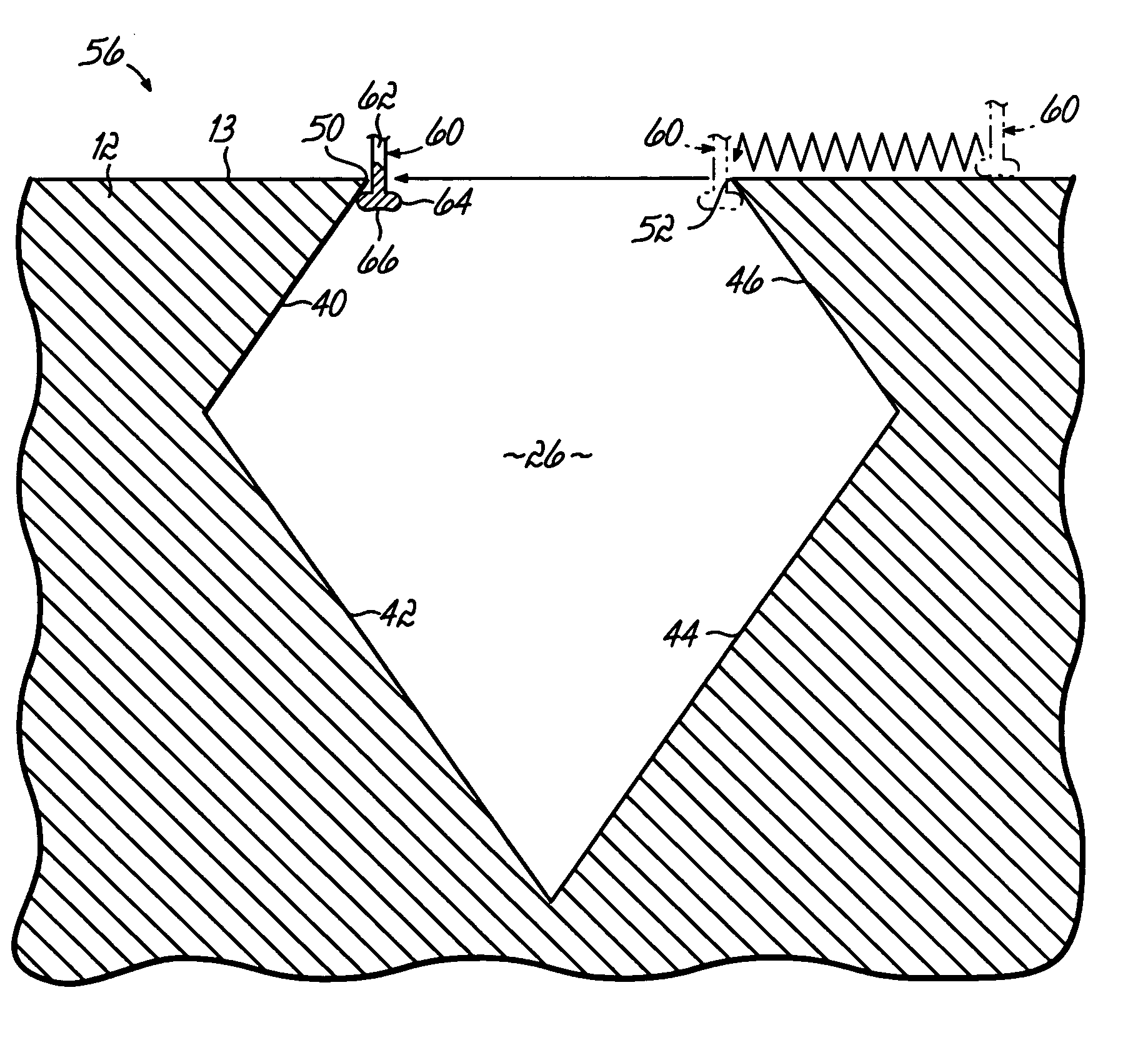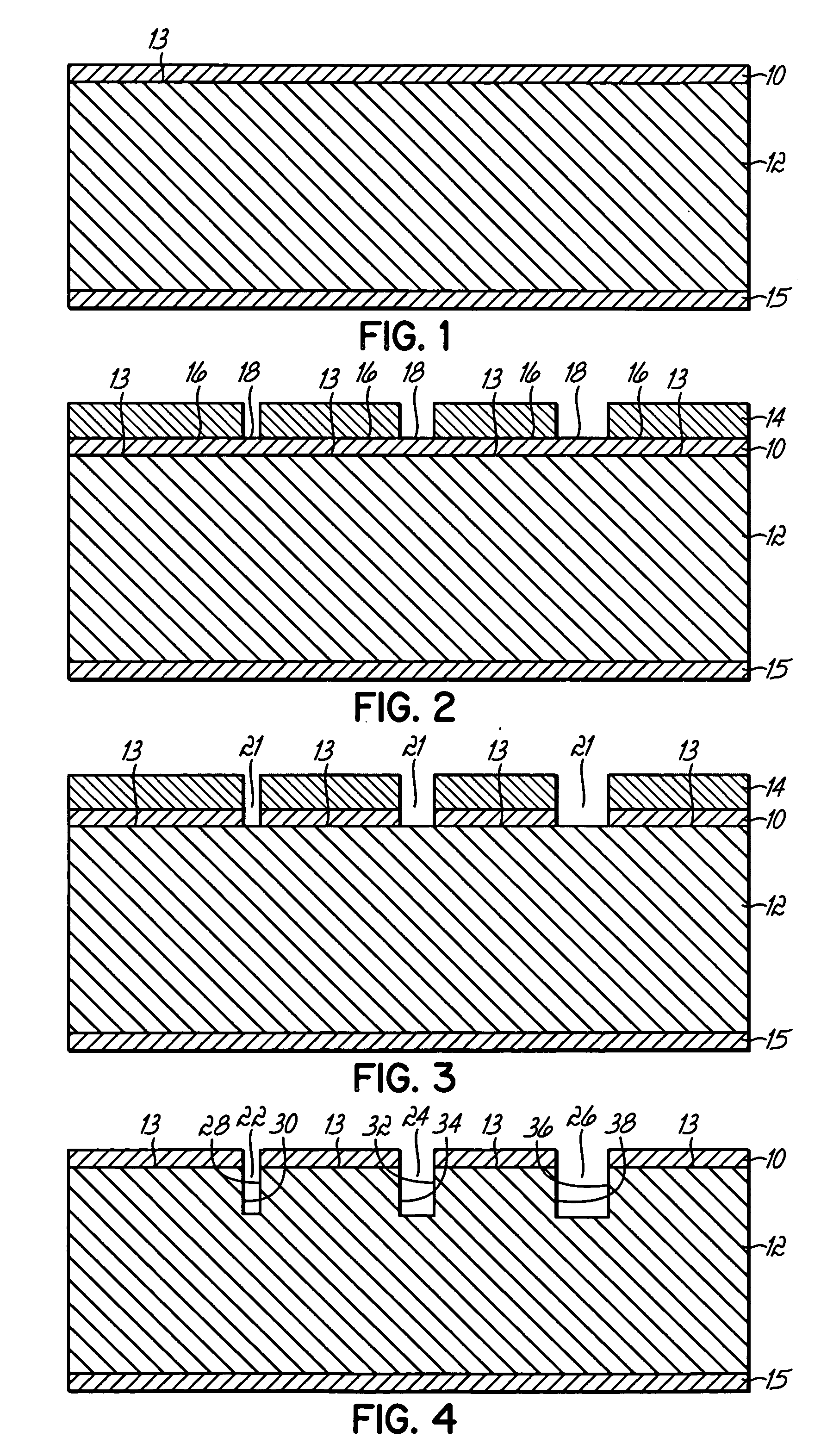Methods of fabricating structures for characterizing tip shape of scanning probe microscope probes and structures fabricated thereby
a technology of scanning probe and microscope probe, which is applied in the field of structure fabrication for characterizing the tip shape of scanning probe microscope probe and the structure fabricated thereby, can solve the problems of introducing additional distortions into the image data, the feature size approaches the microscope resolution limit, and the inability to directly image the small probe tip with sufficient accuracy
- Summary
- Abstract
- Description
- Claims
- Application Information
AI Technical Summary
Benefits of technology
Problems solved by technology
Method used
Image
Examples
Embodiment Construction
[0021] Although the invention will be described next in connection with certain embodiments, the invention is not limited to practice in any one specific type of atomic force microscope (AFM). Exemplary AFM's in which the principles of the invention can be practiced are commercially available, for example, from Veeco Metrology Group (Santa Barbara, Calif.). The description of the invention is intended to cover all alternatives, modifications, and equivalent arrangements as may be included within the spirit and scope of the invention as defined by the appended claims.
[0022] With reference to FIG. 1, a hard mask 10 is formed as a uniformly thick surface layer on a single crystal substrate 12, which is characterized by a substantially-planar upper surface 13. A layer 15 of the hard mask material may also be formed on a backside of the substrate 12. In a specific embodiment of the invention, substrate 12 is a (100) silicon wafer characterized by a resistivity of one-tenth (0.1) ohm-cm ...
PUM
 Login to View More
Login to View More Abstract
Description
Claims
Application Information
 Login to View More
Login to View More - R&D
- Intellectual Property
- Life Sciences
- Materials
- Tech Scout
- Unparalleled Data Quality
- Higher Quality Content
- 60% Fewer Hallucinations
Browse by: Latest US Patents, China's latest patents, Technical Efficacy Thesaurus, Application Domain, Technology Topic, Popular Technical Reports.
© 2025 PatSnap. All rights reserved.Legal|Privacy policy|Modern Slavery Act Transparency Statement|Sitemap|About US| Contact US: help@patsnap.com



